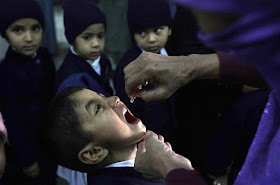 |
| It seems to be working fine |
The West Nile virus epidemic of 2012, the worst in a decade, may be notorious for yet another reason: The virus, in some cases, is attacking the brain more aggressively than in the past, raising the specter that it may have mutated into a nastier form, say two neurologists who have extensive experience dealing with the illness. One doctor, Art Leis in Jackson, Miss., has seen the virus damaging the speech, language and thinking centers of the brain — something he has never observed before. The other, Elizabeth Angus in Detroit, has noticed brain damage in young, previously healthy patients, not just in older, sicker ones — another change from past years.But a scientist for the Centers for Disease Control and Prevention said the federal agency has not seen any evidence that the virus is causing a different type of brain damage. He said doctors may be seeing more-serious cases this year because there are more cases overall. But he acknowledged that the CDC does not collect the granular data needed to quickly determine whether the virus is causing more-severe brain damage.
Still, Angus, who has treated West Nile patients for a decade, and Leis, who has more experience treating severe West Nile illness than perhaps any doctor in the country, both suspect the virus has changed — a view bolstered by a Texas virologist whose laboratory has found signs of genetic changes in virus collected from the Houston area. “I’ve been struck this year that I’m seeing more patients where the brain dysfunction has been very much worse,” said Angus, of Detroit’s Henry Ford Hospital. “It makes you wonder if something’s different, if something’s changed.” And while the virus in the past has typically invaded the brain and spinal cord only of people who have weakened immune systems, such as the elderly and transplant or cancer patients, Angus this summer treated a severely affected woman in her 20s and a man in his 40s. Leis said he is seeing much more severe encephalitis — inflammation of the brain — than he has in the past. “It is clearly much more neuroinvasive, neurovirulent,” he said. Four patients Leis treated this summer had lost their ability to talk or write. Another was paralyzed on one side, as often seen in strokes, not West Nile infections. Others experienced recurring seizures.
Vaccine Exemption Forms














.jpg)











